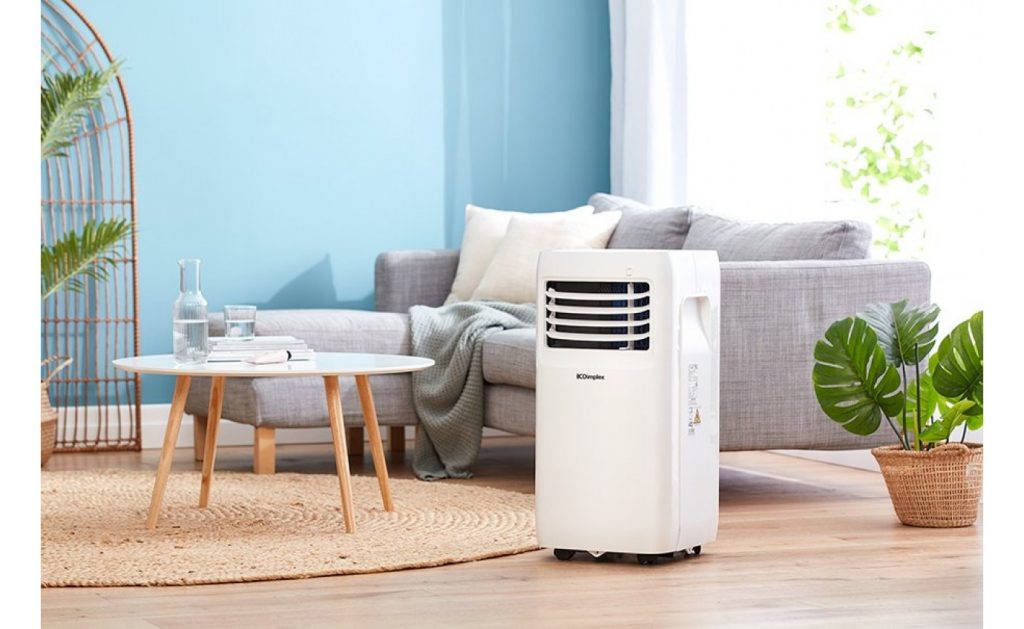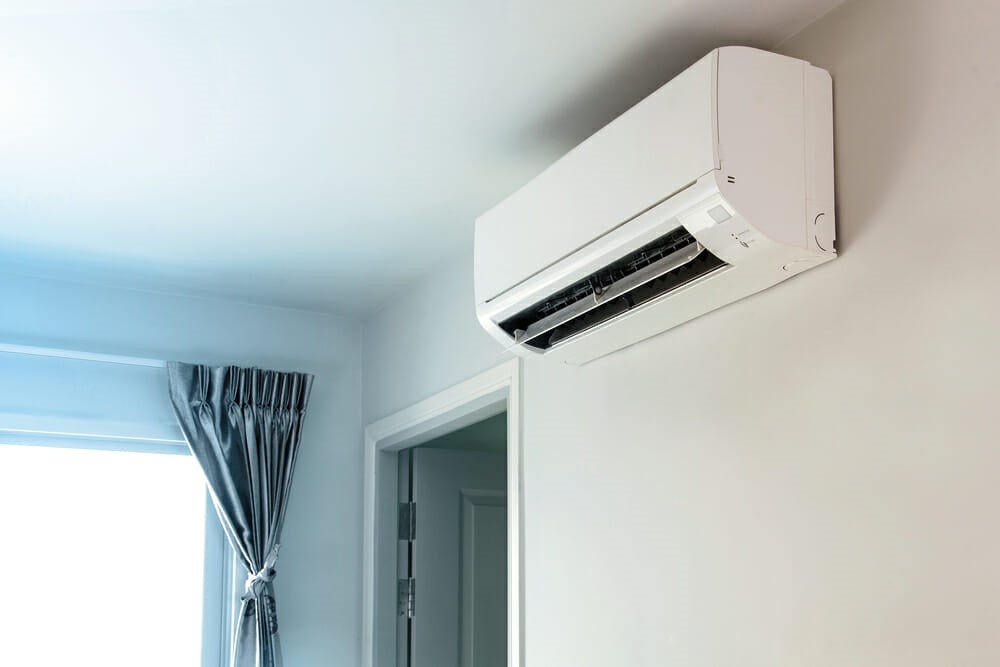Large central systems powered by outdoor compressors to small plug-in units that stand on the floor or mount in a window are just a few of the several types of home air conditioners available. The working parts of air-conditioning systems, such as a refrigerant, a compressor, condenser coils, an expansion valve, and evaporator coils, are the same regardless of the form they take. These all combine to move heat and moisture out of your house and onto the exterior.
To assist you choose the best sort of home air conditioner for your room, we’ve broken down the specifics of each model in the sections below.

| Pros | Cons |
|---|---|
| Inexpensive and easy installation | Moisture might drip on the floor |
1. Window Air Conditioners
Best For: Cooling a single room to a small home
A window air conditioner is technically called a “unitary” air-conditioning system and consists of a self-contained air-conditioning unit that is placed in a window or, less commonly, through a hole in an exterior wall. A window air conditioner contains all the refrigeration components in one compact box. It ejects heat out through condenser coils located on the outdoor side of the appliance. And it blows cooled air into the room on the indoor side where the evaporator coils are located.
Room moisture that condenses on the evaporator coils generally drips to the ground from a tray located on the underside of the appliance. This is why it is important that a window air conditioner is installed so it tilts very slightly toward the outdoor side. Tilted the wrong way, some air conditioners might drip water onto the floor inside the house.
Window air conditioners come in many sizes to cool any space from a single room up to an entire floor. A large window air conditioner might be able to cool an entire small home, especially if it’s a single-story home. And it’s an economical choice with easy installation.
2. Portable Air Conditioners
Best for: Rooms under 500 square feet
A window air conditioner, sometimes known as a “unitary” air-conditioning system, is made up of a self-contained air-conditioning unit that is installed in a window or, less frequently, through a hole in an outside wall.
In a window air conditioner, the entire refrigeration setup is housed in a single, transportable box. Heat is emitted from condenser coils on the outside of the device. With the evaporator coils on the indoor side, it also exhausts cooled air into the space. The moisture from the room that condenses on the evaporator coils often drips to the ground through a tray on the appliance’s underside. The installation of a window air conditioner must be done with a very slight tilt towards the exterior side because of this. Certain air conditioners could drip water inside the house if they were tilted the incorrect way.
Window air conditioners come in a variety of sizes to cool any area, from a single room to an entire floor. A large window air conditioner might be able to totally chill a small one-story house. It is also an affordable choice with an easy installation.

| Pros | Cons |
|---|---|
| Can be moved to where cooling is needed | Not ideal for large spaces |

| Pros | Cons |
|---|---|
| Can provide cooling and heating to homes | Installation can be complicated |
3. Split Air Conditioners
Best for: Homes without an HVAC system
The air conditioning system is divided into two packages, or terminal units, by the split system, often known as ductless or “mini-split.” The compressor, condenser, and condenser fan are all parts of the condensing unit, which is situated on the outside of the building. The inside evaporative unit is in charge of cooling and distributing the air.
This is often a rectangular box unit with a high interior wall mount that houses an evaporator coil, expansion valve, and circulation fan. Between the condensing and evaporation units, a wall-mounted tube for refrigerant runs through it. Water that condenses on the indoor evaporator coils is drained away by a secondary tube that runs parallel to the refrigerant tubing.
In addition to hotels and other multi-unit buildings, split systems are frequently seen in residences. Homes without HVAC systems, such as those with electric heating or hot-water or steam radiator heating, are increasingly choosing this alternative. It is easier to install than an HVAC system for the entire house. Additionally, the majority of split air conditioners double as heat pumps and provide both cooling and heating capabilities.
4. Central Air Conditioning
Best for: Effective whole-home cooling
The biggest and priciest conventional air conditioner is a central air conditioning system. A central system, like a split system, is composed of two units: the condensing unit and the evaporative unit, which are linked by refrigerant tubing.
The compressor, condensing coils, and condensing fan are all located inside the huge, boxy condensing unit, which is an outdoor appliance. The evaporative unit of your furnace normally resides in the plenum, a sizable central chamber located between the furnace and the ductwork. This indicates that your heating system’s ducts and blower fan are shared by the air conditioning system. The evaporator coil and expansion valve make up the evaporative unit inside the plenum. The majority of the time, a tube leading to a floor drain is used to remove condensed moisture from the evaporator coils.
The best form of air conditioner for cooling entire homes is often a central air conditioner. Making sure the new central system is sized properly for your home is the main factor to take into account while installing it. A system that is too big won’t work well or effectively dehumidify the inside air. It won’t cool properly if it’s too tiny. A professional is frequently needed for the maintenance of a central air conditioning system, which is very crucial.

| Pros | Cons |
|---|---|
| Efficiently cools entire homes | Must be appropriately sized for space |
Choosing a Home Air Conditioner
One of the most crucial criteria in choosing the best house air conditioner for you is the size and kind of the space you want to cool. For instance, a portable or window unit will probably be adequate if you only need to cool one area. Likely, you’ll need to choose a portable or window unit if you’re a renter and can’t instal anything permanent.
Cost will probably be a consideration, even if you own your home. For instance, you might be better off with a less expensive ductless system if you don’t want to pay to have a complete HVAC system built.

